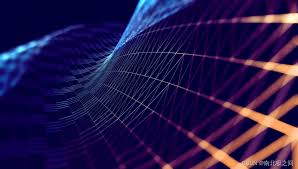From Static to Dynamic: How NFTs are Changing Digital Ownership?
NFTs: How They're Changing Digital OwnershipOriginal article: Dynamic NFTs and Potential
Translated and proofread by “Starknet Chinese Community”

Summary
- Dynamic NFTs, as interactive tokens, can change on-chain data based on events.
- NFTs currently face challenges of static data or centralized risk.
- Starknet supports dynamic and decentralized NFTs, while reducing computation and storage costs.
- Dynamic NFTs empower innovative applications in gaming, music, and art fields.
- Dynamic NFTs mark the flourishing development of the NFT field, providing higher flexibility and adaptability.
If you’ve been following Web3 for the past few years, you’ve probably heard of the Bored Ape Yacht Club, an NFT collection that sold for hundreds of ETH. (The BAYC auction sold for up to $3.4 million.)
- What are the differences between the three stablecoin protocols based on Ethereum LST on the market?
- a16z Investments: dydx, Alongside, LayerZero…
- Blockchain game Illuvium to launch NFTs in collaboration with game retailer GameStop, on sale from June 12th.

Bored Ape Yacht Club #8817
When you hear the word “NFT,” do you think of pixelated JPEG images? However, the concept of non-fungible tokens (NFTs) is far more diverse and potential than JPEG images.
In this blog post, we will explore the concept of dynamic NFTs, which can change on-chain data based on on-chain (or even real-world) events. We will cite some existing cases and potential use cases, and then delve into how Starknet achieves this new type of NFT through low computation and storage costs.
What are dynamic NFTs?
NFTs, or “non-fungible tokens,” are a type of digital asset that represents ownership of specific projects and information. Creators can tokenise their work in the form of NFTs. For example, event tickets can be designed as NFTs, real-world assets such as real estate can be bound to NFTs and become tradable assets, and even music and movies can be represented as NFTs.
However, these NFTs are still in their “first generation,” with more interesting use cases waiting to be explored and gradually developed to build standard specifications.
One of the future use cases for NFTs is dynamic NFTs, which can change the represented value of the NFT. For example, an NFT representing an image could change the color and shape of the image, even acquiring a completely new appearance. Audio NFTs could provide feedback to on-chain events and evolve the audio.
Since all the relevant data for such NFTs is stored on the chain, these changes are public and transparent and can be associated with specific permissions or events. This article will discuss the operational details of such projects, starting with exploring NFTs from a technical perspective and considering why most existing NFTs cannot be dynamic.
Understanding the current state of NFTs
When we talk about NFTs, we usually refer to the ERC-721 standard, which was formally created in 2018. The ERC-721 standard is the basic interface for NFTs, declaring some of the features that must be supported by every implementation of an ERC-721 smart contract. (For users without a Solidity background, it is a blueprint for defining how to interact with the contract/category, specifically functions but not the implementation).

Function set implemented by ERC-721
Every time an NFT changes hands, the transferFrom function is called, which changes the owner of the NFT in the ledger. Similarly, we can call the ownerOf function to check the specific token holder.
Marketplaces like OpenSea rely on NFTs supporting this standard to display tokens on their site and transfer NFTs between buyers and sellers.
Next, let’s take a closer look at the BAYC NFT: Ape#8817. When you visit the OpenSea page, you can see the content of the Ape image with number 8817. But do you know where the image is stored? It’s not on the chain! Storing the entire image on the Ethereum mainnet would require a considerable amount of storage space, and considering that there are millions of NFTs on Ethereum, it is impossible to store all these images on the chain.
Instead, these smart contracts need to store all data related to the NFT (i.e., metadata) at a URL that is accessible on the internet. NFTs have two main options: storing metadata off-chain but still on decentralized storage solutions such as IPFS (check out the metadata example for Ape#8817), or storing data on centralized platforms such as traditional cloud storage.

You can view any BAYC token metadata by looking at the smart contract on the mainnet.
The first choice is IPFS, which has the basic constraint that the data becomes static. Once the data is stored on IPFS, it cannot be changed, and any changes to IPFS are impossible.
The second solution allows for modification of NFT-related metadata, but it leads to serious centralization issues that contradict the concept of blockchain.
Therefore, in the growing contradiction between accessibility and centralization, what we ultimately get is an NFT that remains “unchanged”, even in use cases such as games, SBT, creator tokens, etc. that require dynamic changes.
NFTs that have both dynamic and decentralized advantages are necessary. This is where dynamic NFTs will come into play.
The low cost of computing and storage on Starknet makes dynamic NFTs possible
Starknet is an effective proof-of-validity scaling solution (also known as zero-knowledge scaling) developed and built by StarkWare. It greatly reduces computing and storage costs through the STARK cryptographic system. It is precisely because of these cost savings that Starknet can ultimately make the concept of dynamic and decentralized dynamic NFTs possible.
Let’s take a look at how it works with an example.
The Carbonable protocol is a carbon-neutral project, which includes funding regeneration projects to enterprise-managed net-zero plans and reporting. The Carbonable team’s firm commitment to decentralization and transparency prompted them to develop a proof-of-concept for the first batch of “dynamic” NFTs, with NFT metadata stored entirely on-chain. Here is an example token deployed by Carbonable’s NFT contract.

As an experiment, the main part of this “value” was transferred to another address and the metadata associated with the token was updated automatically. Comparing the example images above and below, you can see that the token image has also changed, with the text color changing from Blocking to bronze. Note that this change happened entirely on-chain. This is the power of dynamic NFTs!

Unlike ERC-721, where the balance and ID of specific tokens are used to determine NFT ownership, for dynamic NFTs, the primary information is the value stored in the token.
This means that whenever a user requests the value stored in a token, that value will change. This can be achieved by declaring a simple contract (or “metadata” contract), which can handle both the dynamic and static parts of NFT metadata. In short, the “static” part can be seen as a short string that stores some of the NFT’s attributes.
On the other hand, the “dynamic” part is different because it needs to return some information (let’s assume a string), which can run some code on the metadata contract. The code can be dynamic, so the value it returns can change with specific parameters of the chain or the contract itself. And it may change the contract state when interacting externally.
Note that the metadata contract only needs to be declared on Starknet; it doesn’t even need to be deployed as a contract. Unlike Ethereum, Starknet distinguishes between contract categories and contract instances. The contract category represents the code of the contract (but without state), while the contract instance represents a specific category instance with its own state. When declaring a contract category, the code is stored on the chain, but no state maintenance is required. Since the metadata contract doesn’t necessarily need to have a state, simply declaring it is enough to run code in the NFT contract function.

The proof of concept deployed by the Carbonable team is completely decentralized because the SVG storage of the image contains all the code deployed on the contract (see the code here). This allows anyone to track changes to the SVG. As long as the token is transferred from one user to another, the value of the token will change, showing its adaptability.
Use cases of dynamic NFTs
The example deployed for testing purposes in the previous section only opens the door to a large number of possibilities, such as:
Images and animations. As shown in the previous example, modifiable images can be stored on the chain. Similarly, animations can also be stored on the chain and can be modified through user interaction. Several teams are currently researching this aspect, which has great potential in the field of crypto games. For example, in the Carbonable proof of concept project mentioned above, the text color changes depending on the value stored in the token. Therefore, if a user has a token with a value greater than 1000, the text color can be Blocking, while if the value is in the range of 100-1000, it is silver.
Music and audio. When we listen to music or audio files, they are usually in .mp3 or .wav format. This type of audio file is subject to “limitations” because it cannot be modified in parts or beats quickly. Audio formats (such as WAV or MP3) store actual sound data, while MIDI (Musical Instrument Digital Interface) files contain instructions for synthesizers or other devices to generate sound.
Raphael Doukhan, co-founder of Rosis Lab, stores MIDI files as JSON objects on Starknet and allows for external interaction to modify them, demonstrating the concept of generative music. Certain parts of the music file are fixed (such as the music structure and melody themes), but other parts can be modified (such as BPM, tension curves, and pitch). Such proofs of concept are classic examples of generative music, where artists’ works “are no longer limited objects, but transcend the creator and the creation.” For example, the beat frequency of an audio file can change based on the user’s interaction with the file, giving the music unique attributes in an entirely new interaction.
Games, fantasy sports, and collectibles. On-chain games can use the power of dynamic NFTs to make in-game changes to the environment, props, and characters based on different gameplay styles.
For example, the multiplayer full-chain game Realms built on Starknet is constantly exploring dynamic NFT use cases and achieving on-chain character skins (and even music) that can change with the game.
In the field of fantasy sports, character attributes can be upgraded/downgraded based on the player’s performance in the real world (retrieved via oracles).For example, the LaMelo Ball NFT supported by Chainlink. After each game, NBA player’s on-court statistics will be put on-chain via the oracle, and fans can collect players’ “talents” as tokens. The LaMelo NFT is composed of four different attribute types: red Mars, blue Neptune, silver Moon, and Blocking Sun. They are closely related to the different statistical data of NBA players. For example, red Mars is related to scoring, and silver Moon is related to assists. Therefore, every time LaMelo scores or gets an assist, the value of the corresponding NFT can also be increased.

Example of LaMelo Ball NFT
These ideas can be integrated into games, where character skins become “cooler” as players level up, or where player achievements are displayed on NFTs as medals and trophies.
Generative art. Art comes in many forms, some of which have been discussed above. However, the concept of art is broad. OG:CR (Organic Growth: Crystal Reef) is a dynamic NFT project that connects digital art and physical art. Users can collect crystal NFTs on the chain, and the NFTs will evolve with each transfer made by the user. The user’s wallet history (with randomness) determines the change of the crystal. The ultimate idea is to transform digital crystal NFTs into physical art works that can be exhibited in museums around the world.
Dynamic NFT is an evolution
Despite being in its early stages of development, NFTs have already spawned a multitude of applications. The emergence of dynamic NFTs represents a further evolution of this technology. Through chains such as Starknet that have low-cost computation, large amounts of information can be efficiently stored and made sustainably modifiable. Starknet is witnessing this significant development and now is the best time to join the ranks of developers and participate in the construction of new Starknet application scenarios.
Conclusion
Dynamic non-fungible tokens (NFTs) are the vanguard of the transformation of digital assets, responding to events on-chain or in the real world and constantly evolving. As an enhanced version of traditional NFTs, dynamic NFTs break the static data model, introducing changes in value and form. The power of cost-effective computation and storage in Starknet turns the dream of dynamic NFTs into reality, unleashing a wealth of possibilities such as mutable images, evolving music, interactive games, and generative art. As we continue to explore the blockchain and digital asset space, dynamic NFTs show amazing evolution, marking the arrival of a new era in technology and creativity.
We will continue to update Blocking; if you have any questions or suggestions, please contact us!
Was this article helpful?
93 out of 132 found this helpful
Related articles
- Why does the US SEC, which has clearly classified more than a dozen tokens as securities, continue to avoid addressing the status of ETH?
- Hourglass Finance: Providing Comprehensive Infrastructure for Time-Locked Tokens
- Understanding the Pros and Cons of FPGA and GPU Acceleration for Zero-Knowledge Proof Calculation
- Web3 IP: What’s Next?
- Deep analysis of the intent behind SEC’s lawsuit against Binance: a jurisdictional dispute or a show of power?
- Apple Vision Pro priced at 25,000 yuan released, ushering in the next generation of human-computer interaction?
- Is Binance in trouble this time with “Li Chu” or “Taking on a Hot Potato”?





